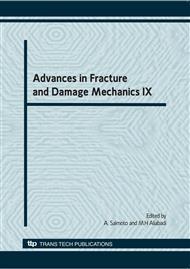p.513
p.517
p.521
p.525
p.529
p.533
p.537
p.541
p.545
Influence on Scattering of SH-Wave by Surface Ground Isosceles Triangular Hill in Right-Angle Plane with Circular Cavity
Abstract:
The analytical solution to the problem of the scattering of SH-wave by isosceles triangular hill near the subsurface cavity in right-angle plane is given by using the idea of match up. Firstly, wave function was constructed by using the methods of complex function, multi-polar coordinate transformation and superposition principle, which satisfied the stress free boundary conditions at the free surfaces for the right-angle plane possessing a circular cavity. Secondly, transform the wave field from the right-angle plane to the half space by using the method of mirror image in order to obtain the total wave filed, which satisfied the boundary conditions. Finally, based on the conditions of the displacement continuity and stress continuity at the “common border” and the stress free condition at the subsurface cavity edge, a series of infinite algebraic equations were given and solved by truncation. Meanwhile, some examples and results are given and discussed.
Info:
Periodical:
Pages:
529-532
Citation:
Online since:
November 2010
Price:
Сopyright:
© 2011 Trans Tech Publications Ltd. All Rights Reserved
Share:
Citation:


